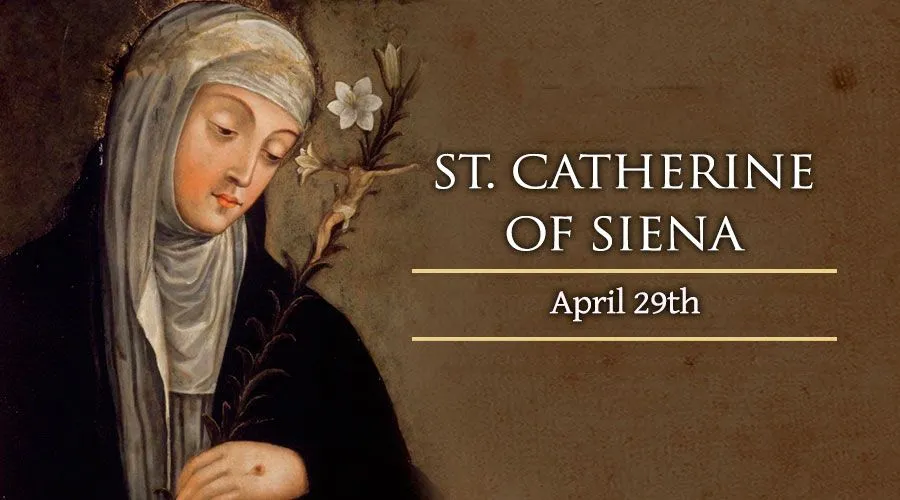Sub-Saharan Africa, 29 April, 2024 / 11:15 am (ACI Africa).
St. Catherine was a third-order Dominican, peacemaker and counselor to the Pope. She singlehandedly ended the Avignon exile of the successors of Peter in the 14th century.
She is the co-patron of Italy and of Europe.
Born in Siena, on the feast of the Annunciation, March 25, 1347, Catherine was the 23rd of Jacopo and Lapa Benincasa’s 25 children. Her twin sister died in infancy.
She exhibited an unusually independent character as a child and an exceptionally intense prayer life. When she was seven years old she had the first of her mystical visions, in which she saw Jesus surrounded by saints and seated in glory. In the same year she vowed to consecrate her virginity to Christ. When, at the age of 16, her parents decided that she should marry, she cut off her hair to make herself less appealing, and her father, realizing that he couldn’t contend with her resolve, let her have her way.
She joined the Dominican Tertiaries and lived a deep and solitary life of prayer and meditation for the next three years in which she had constant mystical experiences, capped, by the end of the three years with an extraordinary union with God granted to only a few mystics, known as ‘mystical marriage.’







